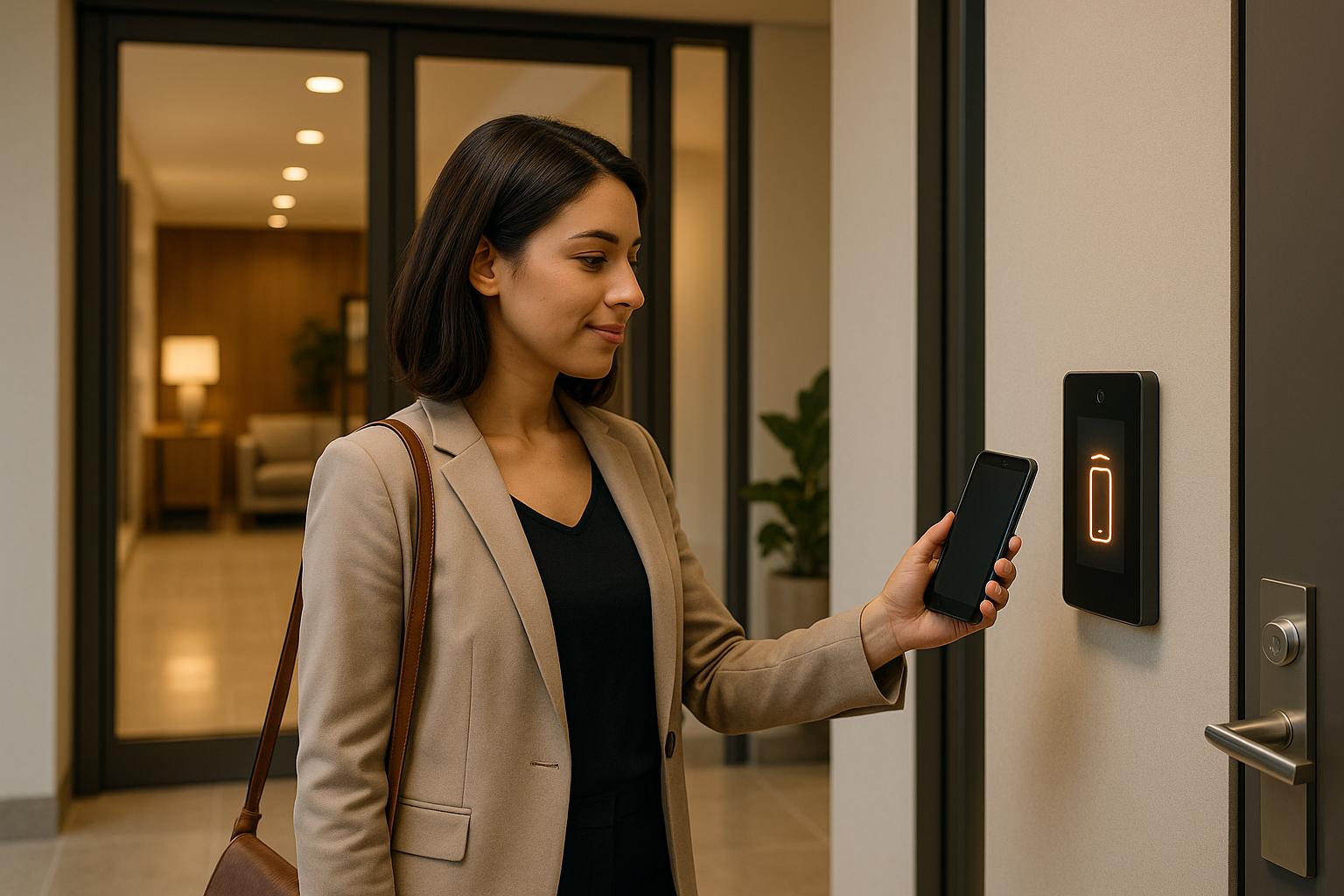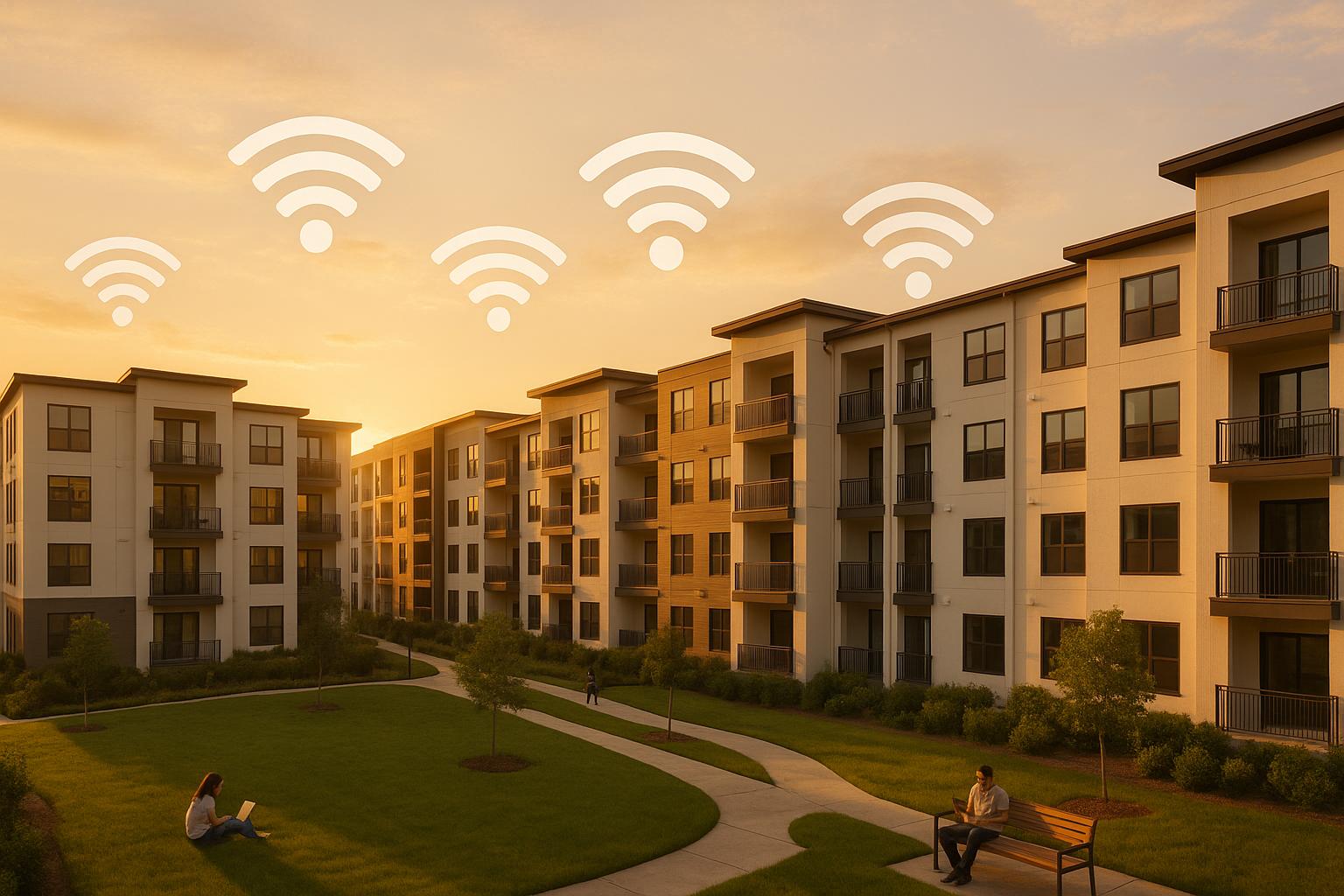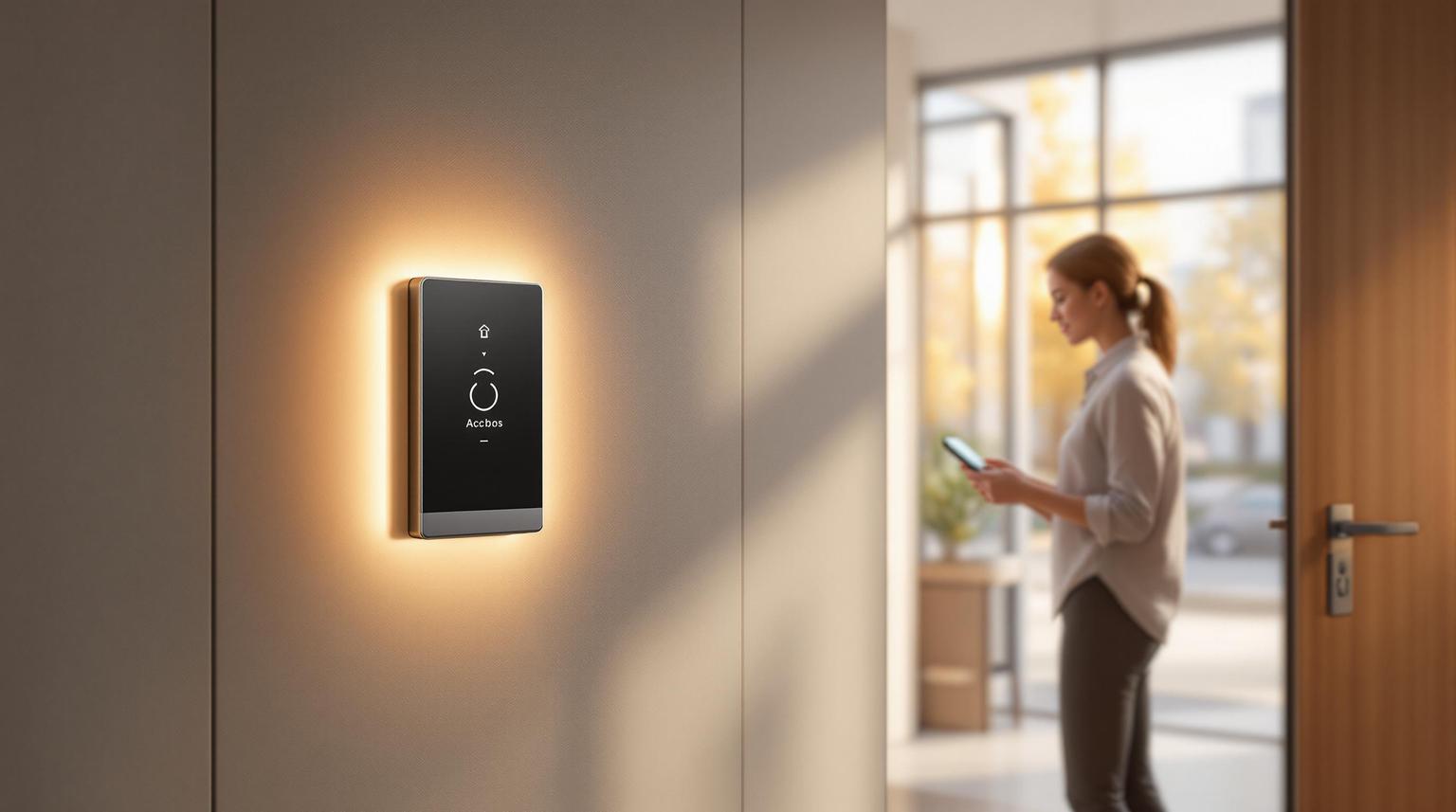If you want to save money, avoid breakdowns, and keep tenants comfortable, your HVAC systems need regular maintenance. Here's what you need to know:
- Monthly Tasks: Change air filters, clean condensate drains, inspect insulation, and check thermostats.
- Quarterly/Semiannual Checks: Inspect refrigerant lines, clean coils, and check ductwork for leaks.
- Annual Professional Inspections: Test ignition systems, check gas connections, and lubricate moving parts.
- Seasonal Prep: Focus on cooling systems in spring/summer and heating systems in fall/winter.
Why it matters:
- Neglecting maintenance can reduce efficiency by 20% and cut system lifespan by 8–15 years.
- Preventive care can reduce breakdowns by 95%, saving up to 40% on repair costs.
- Emergency repairs cost 3–4 times more than routine upkeep.
| Task | Frequency | Estimated Cost |
|---|---|---|
| Air filter changes | Monthly | $2–$50 |
| Coil cleaning | Quarterly | $150–$300 |
| Professional inspection | Annually | $100–$350 per visit |
| Refrigerant replacement | As needed | $200–$450 |
Pro tip: Schedule seasonal maintenance in spring and fall to prepare for peak usage. Regular upkeep not only saves money but also ensures tenant satisfaction and better air quality.
Effective HVAC Preventive Maintenance: A Comprehensive Guide by UpKeep

How Often to Service HVAC Systems
Sticking to a regular maintenance schedule is key to keeping HVAC systems running efficiently and extending their lifespan. Different parts of the system need attention at various intervals, and a well-planned approach can reduce efficiency losses by as much as 15% [3]. Plus, preventive maintenance is far cheaper than reactive fixes - emergency repairs and downtime can cost 40% more [5]. Ignoring maintenance entirely? That could shave 8–15 years off your system's life [5].
Monthly Maintenance Tasks
Monthly upkeep forms the backbone of any HVAC maintenance plan. These tasks are simple but effective in keeping your system in top shape and catching small issues before they grow into big problems.
- Air filter changes: A clogged air filter makes your system work harder, driving up energy use and risking equipment damage. In large apartment buildings, regularly changing filters is vital for maintaining efficiency.
- Insulation inspections: Check ductwork and pipes for gaps, tears, or compressed insulation. Poor insulation leads to energy loss and uneven heating or cooling.
- Condensate drain cleaning: A blocked condensate drain can cause water damage and encourage mold growth. Keeping it clear is essential.
- Outside unit checks: Clear away debris, leaves, and vegetation around outdoor units to ensure proper airflow and prevent overheating.
- Thermostat testing: Make sure your thermostat is reading temperatures accurately and cycling the system properly to avoid unnecessary energy use and keep tenants comfortable.
While monthly tasks are foundational, quarterly and semiannual maintenance digs deeper to safeguard performance.
Quarterly and Semiannual Maintenance
These tasks require more expertise but are critical for preventing major breakdowns.
- Quarterly inspections focus on refrigerant lines, coils, fans, and motors. Fixing refrigerant leaks quickly ensures the system cools effectively, while cleaning coils improves heat transfer. Regular fan and motor inspections help catch wear and electrical issues early.
- Semiannual maintenance involves a more thorough check. Cleaning the heat exchanger in gas-fired systems is crucial for safety - carbon buildup can be dangerous. At the same time, refrigerant levels, belts, and pulleys should be inspected to prevent leaks or sudden failures. Ductwork should also be checked every six months for leaks or damage that could disrupt airflow.
| Maintenance Task | Frequency |
|---|---|
| Change air filters | Monthly |
| Clean condensate drain | Monthly |
| Check refrigerant lines | Quarterly |
| Clean coils | Quarterly |
| Inspect ductwork | Every 6 months |
| Check refrigerant levels | Every 6 months |
For a deeper dive, annual professional inspections are a must.
Annual Professional Inspections
Annual inspections by certified technicians are essential for long-term HVAC reliability in apartment buildings. These experts conduct detailed evaluations to ensure everything is running safely and efficiently.
- Ignition system testing: Ensures gas-fired equipment operates safely and prevents heating failures during high-demand periods.
- Gas connection checks: Regularly inspecting for leaks and proper pressure helps avoid safety risks and costly repairs.
- Lubrication of moving parts: Bearings, motors, and other components need lubrication to prevent wear and extend their lifespan.
"Overseeing scheduled maintenance and inspections is a critical responsibility. This involves ensuring that inspections are performed seasonally or as required and that all items on the HVAC maintenance checklist are completed." - Manifestly Checklists [6]
Annual inspections also cover performance testing, electrical system evaluations, and safety control checks. While these inspections require an upfront investment, they often pay off by improving efficiency, extending equipment life, and avoiding expensive emergency repairs. In fact, routine maintenance can lead to energy savings of up to 30% [7].
Seasonal HVAC Maintenance Checklists
Taking care of your HVAC system seasonally keeps it running efficiently all year long. Spring and fall are the best times for HVAC maintenance because they bridge the gap between heavy usage periods [16]. By following seasonal checklists, property managers can sidestep expensive repairs and ensure consistent temperature control in their buildings.
Spring and Summer Checklist
Spring is the time to focus on your cooling system to prepare for the heat of summer [15]. Tackling these tasks early helps avoid breakdowns when demand is at its peak.
- Test the air conditioning system: Run a full cycle to confirm it cools effectively and hits the desired temperature. Early testing can uncover issues before summer arrives.
- Clean the outdoor condenser unit: Remove debris to maintain proper airflow [10].
- Check refrigerant levels and electrical connections: Low refrigerant can reduce cooling performance and harm the compressor, while loose electrical connections might lead to fires or system failures [9].
- Clear the condensate drain: Prevent water damage and mold by ensuring the drain is free of blockages.
- Inspect ductwork: Look for leaks and seal any gaps to stop cool air from escaping, which helps maintain energy efficiency [10].
- Calibrate the thermostat: Make sure it reads temperatures accurately and cycles the system correctly. Test both cooling and fan modes to ensure proper operation [9].
Once the cooling system is ready, it’s time to shift attention to preparing the heating system for the colder months ahead.
Fall and Winter Checklist
After summer, the focus moves to heating system maintenance to ensure it operates reliably during the colder months. Fall is the perfect time to get your heating system in shape [15]. Sealing small gaps in windows and doors can help Americans save up to 15% on heating and cooling costs [11].
- Test the heating system: Run a full cycle on your furnace or boiler to ensure it heats evenly and reaches the desired temperature. Older systems, especially those over ten years old, may require extra care since they can be significantly less efficient [12].
- Replace air filters: Heating systems often run constantly in winter, so it’s crucial to change filters every 30–90 days. High-efficiency pleated filters can also improve indoor air quality [13][14].
- Store combustible materials safely: Keep flammable items away from heating equipment. A leading cause of heating-related fires is failing to clean equipment, particularly chimneys [13].
- Test carbon monoxide detectors: Replace batteries annually. Gas-fired systems pose carbon monoxide risks, especially if there are cracks in heat exchangers or blocked ventilation [13][14].
- Seal windows and doors: Inspect weatherstripping and caulking around openings, replacing any damaged materials to prevent heat loss [11].
- Maintain rooftop units: Clear debris from units and vents to ensure proper airflow and protect the equipment [13].
| Season | Primary Focus | Key Tasks |
|---|---|---|
| Spring/Summer | Cooling preparation | AC testing, condenser cleaning, refrigerant checks |
| Fall/Winter | Heating preparation | Furnace testing, filter changes, safety inspections |
"Seasonal HVAC maintenance means getting your system checked in the spring and fall, before the heat of summer or cold of winter hits. These visits help your HVAC run smoothly when you need it most." - Wilson's Refrigeration and Air [15]
While property managers can handle basic tasks like changing filters and clearing debris, professional inspections are essential for more technical work. Certified technicians can safely manage tasks like electrical checks, refrigerant adjustments, and internal component cleaning [15]. Regular seasonal maintenance not only improves system performance but also helps keep maintenance costs under control.
sbb-itb-58157f8
HVAC Maintenance Cost Estimates
Understanding HVAC maintenance costs is key to planning your budget and avoiding unexpected expenses. A single HVAC maintenance appointment typically costs between $100 and $350, while annual service contracts, which include multiple visits, can run up to $500 [17]. For apartment buildings or properties with multiple units, these expenses can escalate quickly, making careful financial planning a must.
Typical Maintenance Costs
Commercial HVAC systems come with steeper maintenance costs due to their size and complexity. Annual maintenance for commercial systems generally falls between $500 and $2,000 per unit [18]. This range reflects the diverse types of systems and their varying maintenance requirements.
For specific tasks, here are the typical costs:
- Filter cleaning: $2–$50
- Coil cleaning: $150–$300
- Drain line cleaning: $75–$200
- Refrigerant replacement: $200–$450
- System energy efficiency audits: $100–$300 [17]
| Maintenance Task | Cost Range |
|---|---|
| Filter cleaning | $2–$50 |
| Coil maintenance and cleaning | $150–$300 |
| Drain line cleaning | $75–$200 |
| Refrigerant replacement | $200–$450 |
| System energy efficiency audit | $100–$300 |
For residential properties, yearly maintenance costs range from $175 to $300 for basic plans, while more comprehensive options can cost up to $600 [18]. These premium plans often include perks like priority scheduling and discounts on parts [18].
Factors Affecting Costs
Several factors can influence HVAC maintenance expenses. Older systems often require more labor and replacement parts, increasing costs by as much as 50% [17]. Systems with advanced technology also tend to be pricier to maintain because they require specialized expertise [17].
Technicians typically charge between $100 and $350 for a single service visit or $50 to $150 per hour [17]. Costs are generally higher in urban areas compared to rural locations due to differing labor rates.
Choosing between one-time visits and service plans also impacts costs. While service plans often include multiple visits, priority service, and discounts on parts, they may not cover all major repairs [17]. For properties needing regular attention, service plans can offer better long-term value.
Budgeting for HVAC Maintenance
Regular maintenance is not just about keeping systems running smoothly - it also helps control costs. Start by evaluating your property's specific needs and set aside a contingency fund for emergencies. An emergency repair fund of 10–20% of your total annual HVAC budget can cover unexpected breakdowns, which typically cost $100 to $600 per visit [17].
Tracking your annual maintenance expenses can reveal patterns, helping you predict future costs and adjust your budget. Preventative maintenance can reduce repair expenses by up to 40%, making it a cost-effective strategy [2].
"Regular maintenance reduces emergency repair costs and extends system life." - AquinasHVAC.com [2]
When planning budgets, consider the building's age and condition. Rising material costs, supply chain delays, and inflation have increased maintenance expenses by as much as 40%, with delays ranging from 30 days to six months [19].
Establishing long-term relationships with HVAC service providers can help mitigate these challenges. Multi-year contracts often offer stable rates and priority service. Collaborating with professionals for maintenance agreements can ensure priority scheduling and discounted repairs, providing both financial and operational benefits [20].
Property managers should review and adjust their budgets quarterly to account for unexpected repairs or opportunities to improve efficiency [20]. This flexible approach keeps maintenance funds in check while identifying areas to save in the long run.
Benefits of Regular HVAC Maintenance
Regular HVAC maintenance isn’t just about keeping systems running - it’s about improving efficiency, saving money, and ensuring comfort for everyone involved. Let’s break down why sticking to a maintenance schedule pays off.
Key Benefits of Regular Maintenance
Cost Savings:
Preventive care can slash repair expenses by as much as 40% [2]. Plus, it helps avoid those pricey emergency repairs, which can cost three to five times more than routine fixes [1].
Energy Efficiency:
When systems are neglected, they can waste anywhere from 15% to 30% more energy [1]. Regular maintenance helps reduce inefficiencies by 20% to 30%, cutting annual energy use by 5% to 15% [1]. That’s a win for both your wallet and the environment.
Extended Equipment Lifespan:
With proper maintenance, HVAC systems can last between 15 and 30 years. Routine care can add an extra 5 to 8 years to their lifespan while improving efficiency by up to 25% [1][21][23].
"Routine HVAC maintenance for businesses is more than just a matter of convenience - it's essential for the longevity of your equipment, the comfort of your employees and customers, and the overall efficiency of your operations." - City Wide [22]
Tenant Satisfaction:
When HVAC systems are well-maintained, tenants experience fewer disruptions and greater comfort. This proactive approach reduces complaints and improves overall satisfaction [24].
Safety Benefits:
Regular check-ups ensure components are functioning safely, reducing risks like electrical fires caused by faulty wiring or system overloads. Each year, heating-related fires result in 205 deaths, 725 injuries, and $506 million in property damage [24].
Scheduled vs. Emergency Maintenance
Scheduled maintenance is a smarter, more cost-effective approach compared to emergency repairs. It allows for proactive budgeting and minimizes disruptions to operations and tenant comfort [1][4]. By catching small issues early, routine checks help prevent major problems, ensuring consistent indoor comfort and preserving the property’s reputation.
These advantages highlight why sticking to a regular maintenance plan is essential for keeping HVAC systems running smoothly and efficiently.
Conclusion
Sticking to a regular HVAC maintenance schedule is a game-changer for apartment buildings. It not only ensures reliable indoor comfort but also delivers long-term financial benefits by lowering energy costs and extending the life of your equipment. In fact, HVAC systems account for 40% to 60% of total energy use in commercial buildings, and proactive maintenance can slash annual energy bills by 5% to 20% while adding 5 to 8 years to the system's lifespan [1]. Compare that to the steep expenses of emergency repairs, and the value of staying ahead becomes clear.
David Auton, Senior Director of Reliability Engineering at Cushman & Wakefield, summed it up perfectly:
"Running your system until fail or repair easily costs somewhere between three and 10 times as much as a good maintenance program. When the equipment does fail, the actual repair costs are exorbitant, and you typically didn't plan for them." [26]
Beyond cost savings, regular maintenance helps building managers track system performance and maintain detailed records, which is key to long-term success [25]. This level of oversight not only enhances system efficiency but also supports the broader management strategies discussed in this guide. Clean, well-maintained HVAC systems improve air quality by filtering out pollutants, allergens, and contaminants, creating healthier spaces for tenants [8].
Additionally, staying on top of maintenance keeps systems compliant with regulations and minimizes legal risks, all while boosting your reputation among tenants and visitors [25]. Consistent upkeep ensures tenant comfort, reduces complaints, and helps maintain satisfaction year-round. It’s a win-win for everyone involved.
FAQs
What happens if HVAC systems in apartment buildings aren't serviced regularly?
Skipping regular HVAC maintenance in apartment buildings can cause a host of problems. For starters, systems that aren't properly maintained often lose efficiency, leading to higher energy bills and an increased likelihood of sudden breakdowns. Beyond that, neglecting maintenance can negatively affect indoor air quality, which might compromise tenant comfort and even impact their health.
On top of these issues, failing to service HVAC equipment regularly can significantly shorten its lifespan. This means more frequent - and costly - repairs or replacements down the line. It could also void warranties and introduce serious safety risks, like fire hazards or carbon monoxide leaks, putting both tenants and property owners at risk. Keeping up with regular servicing not only ensures the system operates safely and efficiently but also helps avoid unnecessary expenses and potential dangers.
How can property managers budget effectively for HVAC maintenance in large apartment buildings?
Property managers can effectively plan an HVAC maintenance budget by sticking to a few smart strategies. One popular method is setting aside 1% of the property's annual value specifically for maintenance. This allocation typically covers regular servicing and minor repairs, helping to keep systems running smoothly.
It's also wise to incorporate seasonal maintenance tasks into the budget. For example, scheduling inspections for cooling systems in the spring and heating systems in the fall can help avoid surprise expenses down the line.
Don’t forget to plan for capital expenditures, such as replacing older HVAC systems, and consider the potential savings from energy efficiency upgrades. By reserving funds for both routine maintenance and larger repairs, property managers can keep systems reliable, minimize costly emergencies, and ensure residents remain happy.
How does regular HVAC maintenance improve the living experience for apartment tenants?
Keeping up with regular HVAC maintenance plays a big role in improving tenants' overall living experience. It ensures steady indoor comfort and cleaner air, making homes more pleasant and healthier to live in. Plus, a well-maintained system is far less likely to break down unexpectedly, which means fewer disruptions and a more dependable environment.
On top of that, routine check-ups help HVAC systems operate more efficiently. This can lead to lower energy consumption and potentially smaller utility bills - great news for tenants' wallets. And as an added bonus, using less energy supports a greener lifestyle, making the living experience both cost-effective and environmentally friendly over time.


